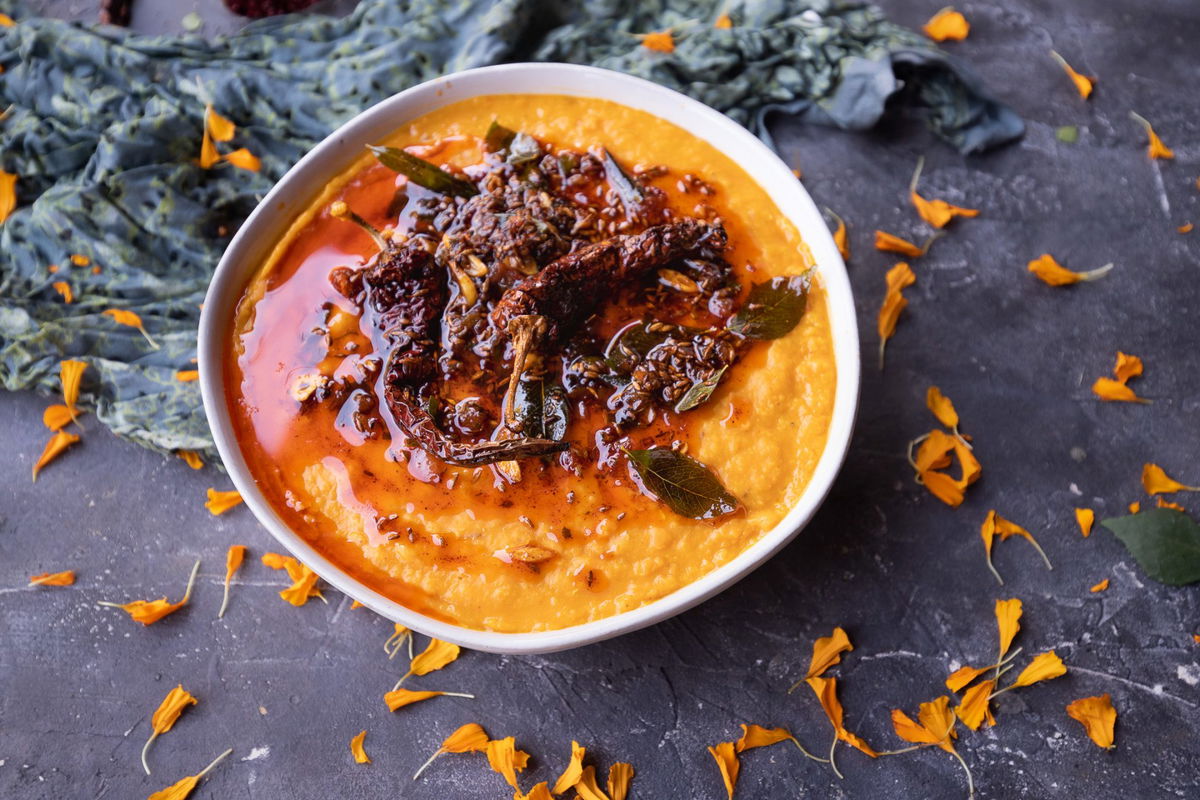Have you ever wondered what masoor dal might have tasted like before modern ingredients like tomatoes, chilies, and onions became common? I wanted to explore that idea, so I made a version of masoor dal using only ingredients that would have been available in ancient India. The result? A dish that’s warm, earthy, and packed with flavor despite its simplicity.
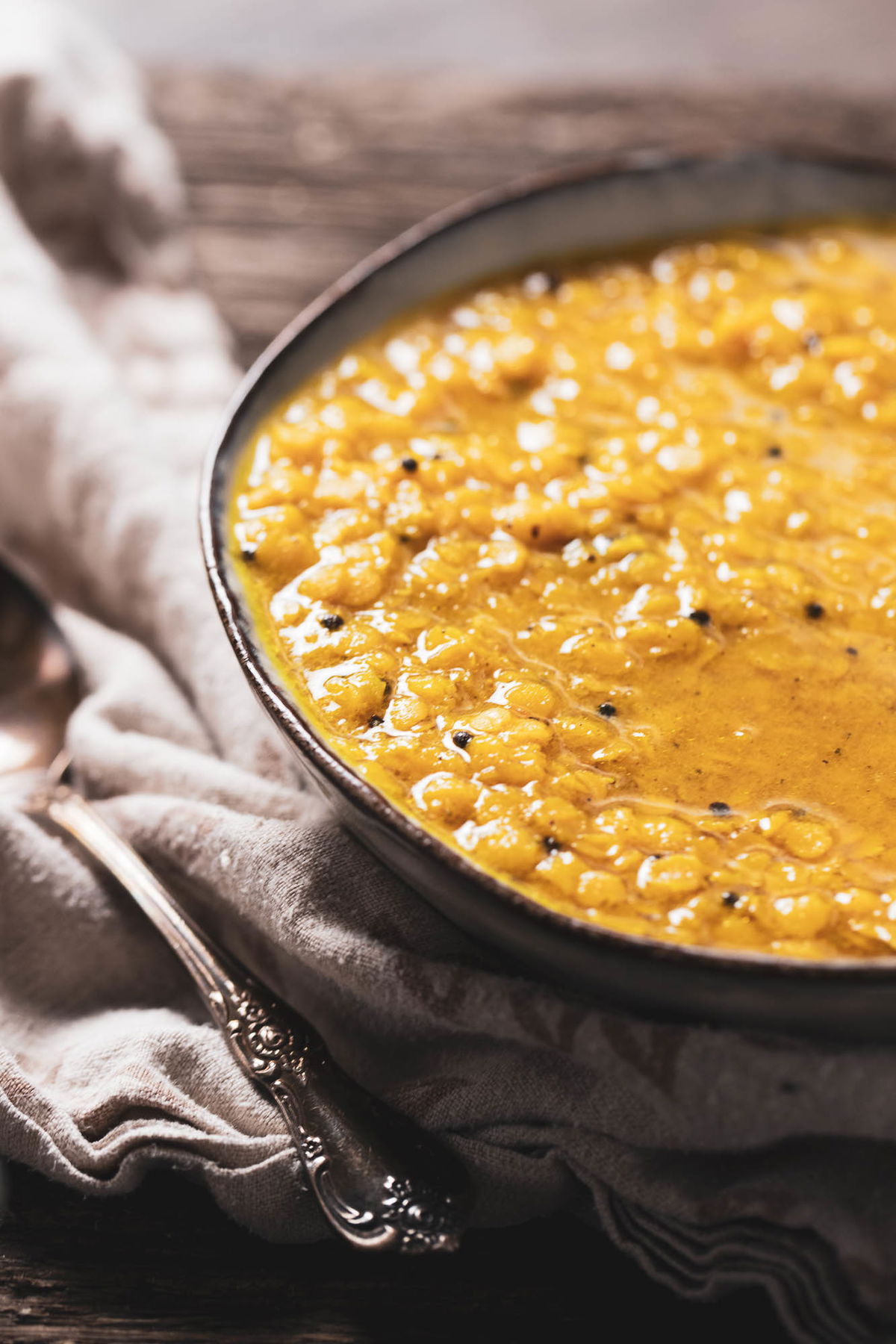
Masoor dal is one of the dals that have been eaten on the Indian sub-continent for thousands of years. It’s the kind of meal that has stood the test of time, and even today, this ancient-style dal is something you could easily serve to your family for dinner.
This is a back-to-basics dal that highlights the essential flavors of traditional Indian cooking. If you love dal, I think you’ll appreciate this glimpse into the past.
Ingredients
Indian cuisine has evolved over centuries, influenced by trade and migration. Tomatoes and chilies, for example, arrived from the Americas only a few hundred years ago. But before these ingredients became staples, what spices and flavors defined dal?
For this dish, I kept things simple (mostly) stuck to ingredients common in Ancient India over 2,500 years ago.
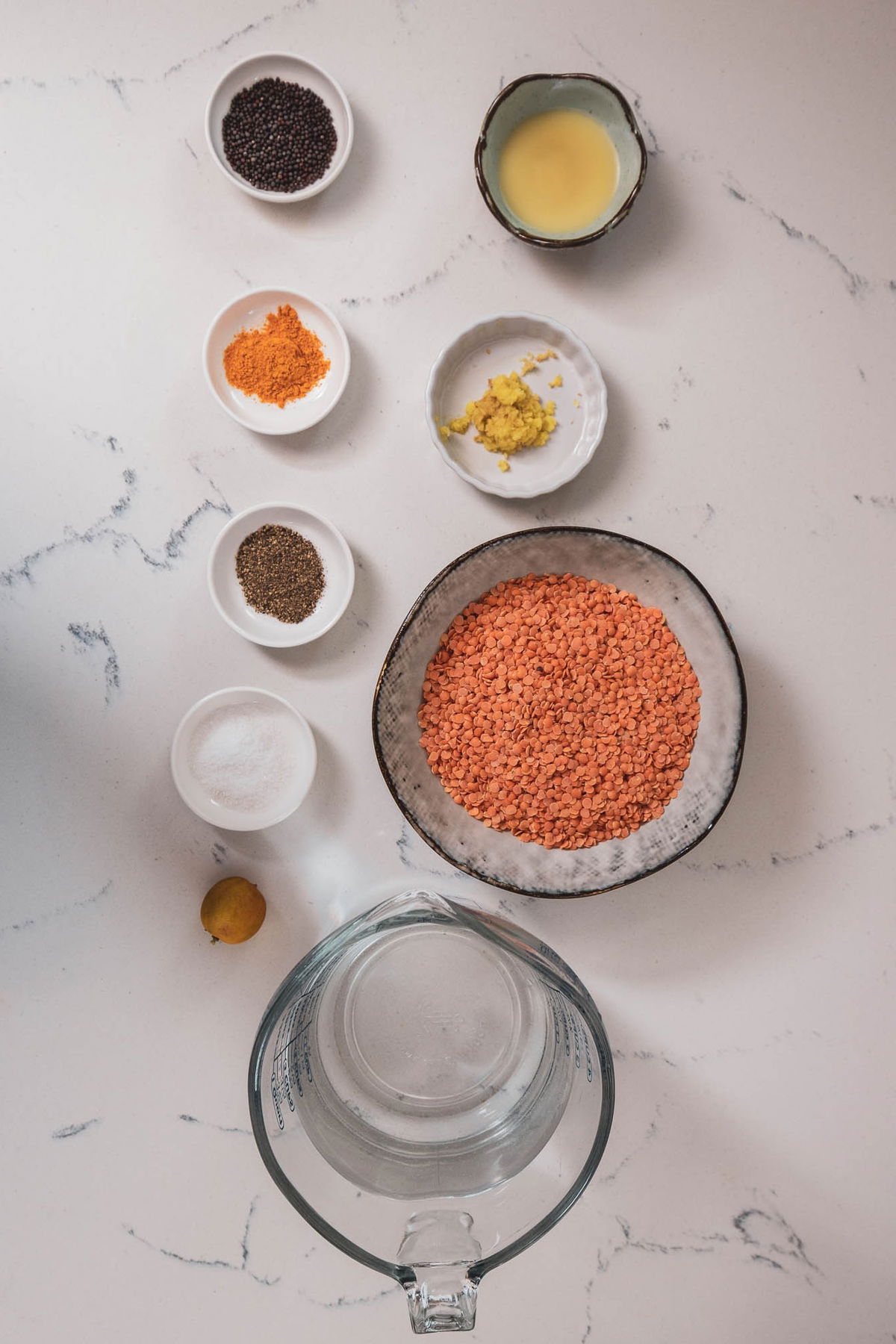
- Masoor dal – One of the oldest cultivated legumes in India.
- Ghee – A traditional cooking fat that has been used for millennia.
- Mustard seeds – Adds a warm, nutty depth.
- Turmeric – Earthy and slightly bitter, a staple in Indian kitchens.
- Black pepper – Before chilies, this was the go-to spice for heat.
- Ginger – Bright and warming.
- Lemon – The only modern ingredient on this list, is a substitute for bitter oranges, which were native to India.
Bringing Ancient Flavors to Your Kitchen
I love how simple yet flavorful this dal is. The black pepper gives it a mild heat, the ginger adds warmth, and the mustard seeds bring a subtle nuttiness. The lemon juice brightens everything up.
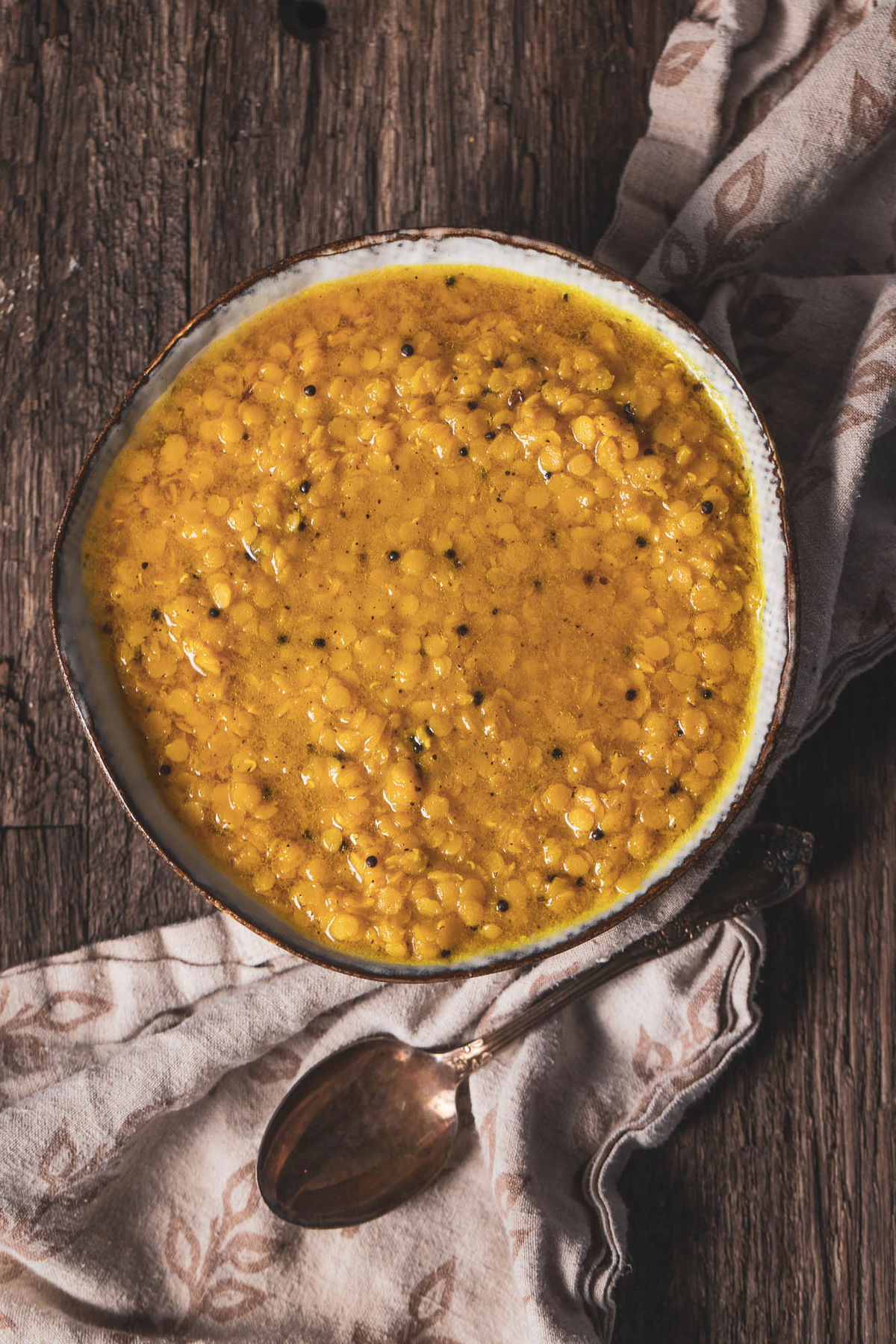
If you prefer a more modern touch, you can always add tomatoes, red chili powder, or garam masala. But there’s something special about connecting with history through food. This dal is a comforting, nourishing meal made just as it might have been thousands of years ago.
Give it a try and let me know what you think!
Stovetop Masoor Dal: An Ancient Indian Recipe
A simple, ancient-style masoor dal made with mustard seeds, black pepper, turmeric, and ginger—warm, earthy, and nourishing.
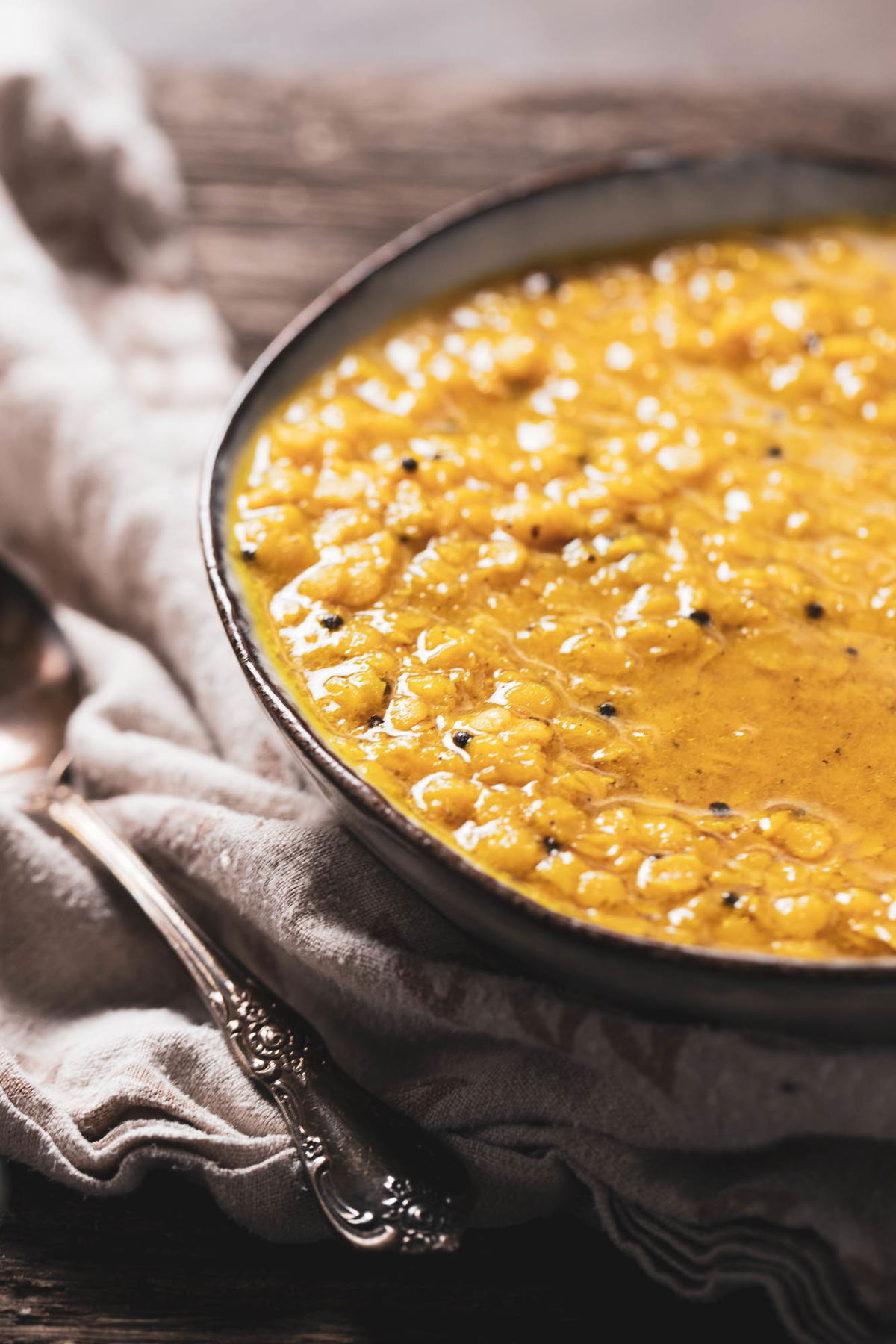
Ingredients
- 1 Tbsp oil or ghee
- 1 tsp mustard seeds
- 1/2 tsp turmeric powder
- 1/2 tsp fresh grated ginger
- 1 tsp ground black pepper (divided)
- 1 cup masoor dal (split pink lentils)
- 3 cups water (plus more if needed)
- Salt (to taste)
- Lemon juice (to taste)
Instructions
- Prepare the Dal
- Rinse the masoor dal thoroughly under running water until the water runs clear. This helps remove excess starch and ensures even cooking. Set aside.
- Temper the Spices (Vaghar)
- Heat oil or ghee in a pot over medium heat until shimmering. To test, add one mustard seed—if it pops, the oil is ready.
- Add the remaining mustard seeds and let them sizzle for 20-30 seconds, releasing their nutty aroma. Stir in the turmeric, grated ginger, and half of the black pepper, letting the spices bloom for a few seconds.
- Cook the Dal
- Add the rinsed dal to the pot and stir to coat it with the fragrant spices. Immediately pour in 3 cups of water and raise the heat to high.
- Let the dal simmer uncovered for 15-20 minutes, stirring occasionally. Check the water level—masoor dal absorbs liquid quickly, so add more water if needed for your preferred consistency.
- Season and Serve
- Once the dal is soft and slightly thickened, stir in salt to taste, the remaining black pepper, and a squeeze of fresh lemon juice for brightness.
- For a thinner consistency, add more hot water. For a thicker texture, cook a little longer until it reaches your desired thickness.
Notes:
Serving Suggestions
Enjoy as a simple soup on its own.
Serve over steamed rice for a classic meal.
Pair with flatbread like roti or paratha for dipping.
Tips & Variations
Adjust the texture: Some prefer dal thick, while others like it soupy. Adjust the water accordingly.
Extra flavor: Traditionally, a spoonful of ghee drizzled on top enhances the richness.
Authentic touch: If available, try using bitter orange instead of lemon for a more historically accurate taste.
